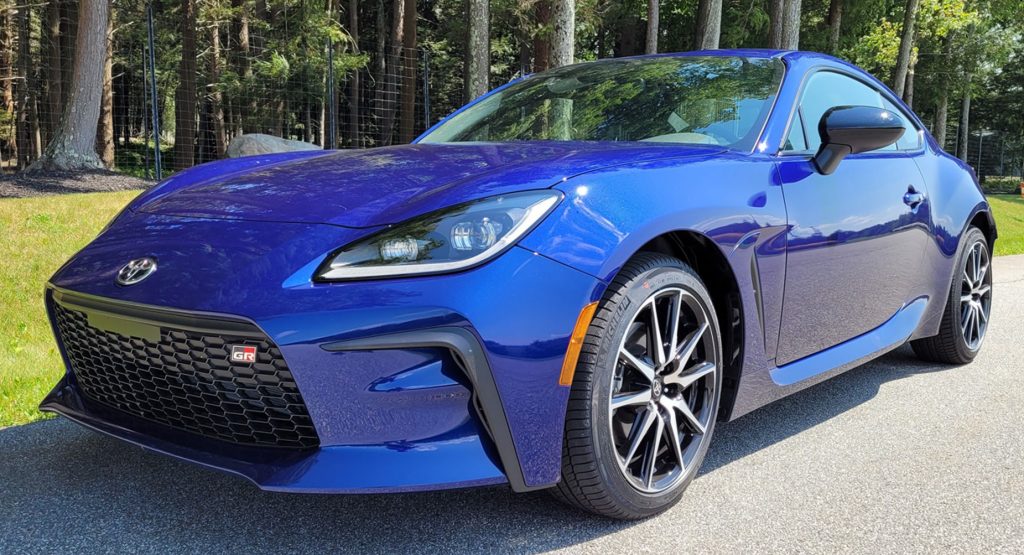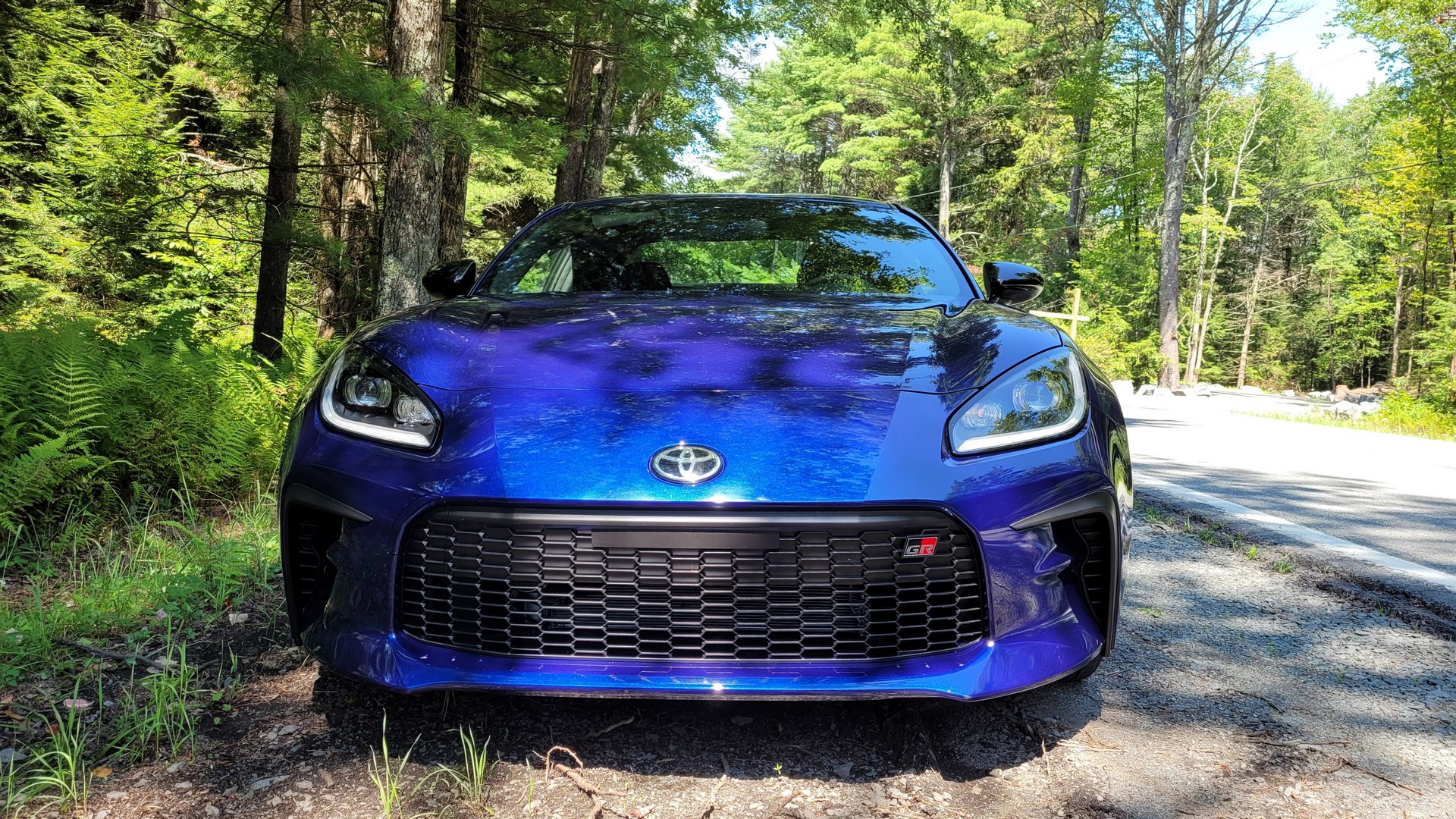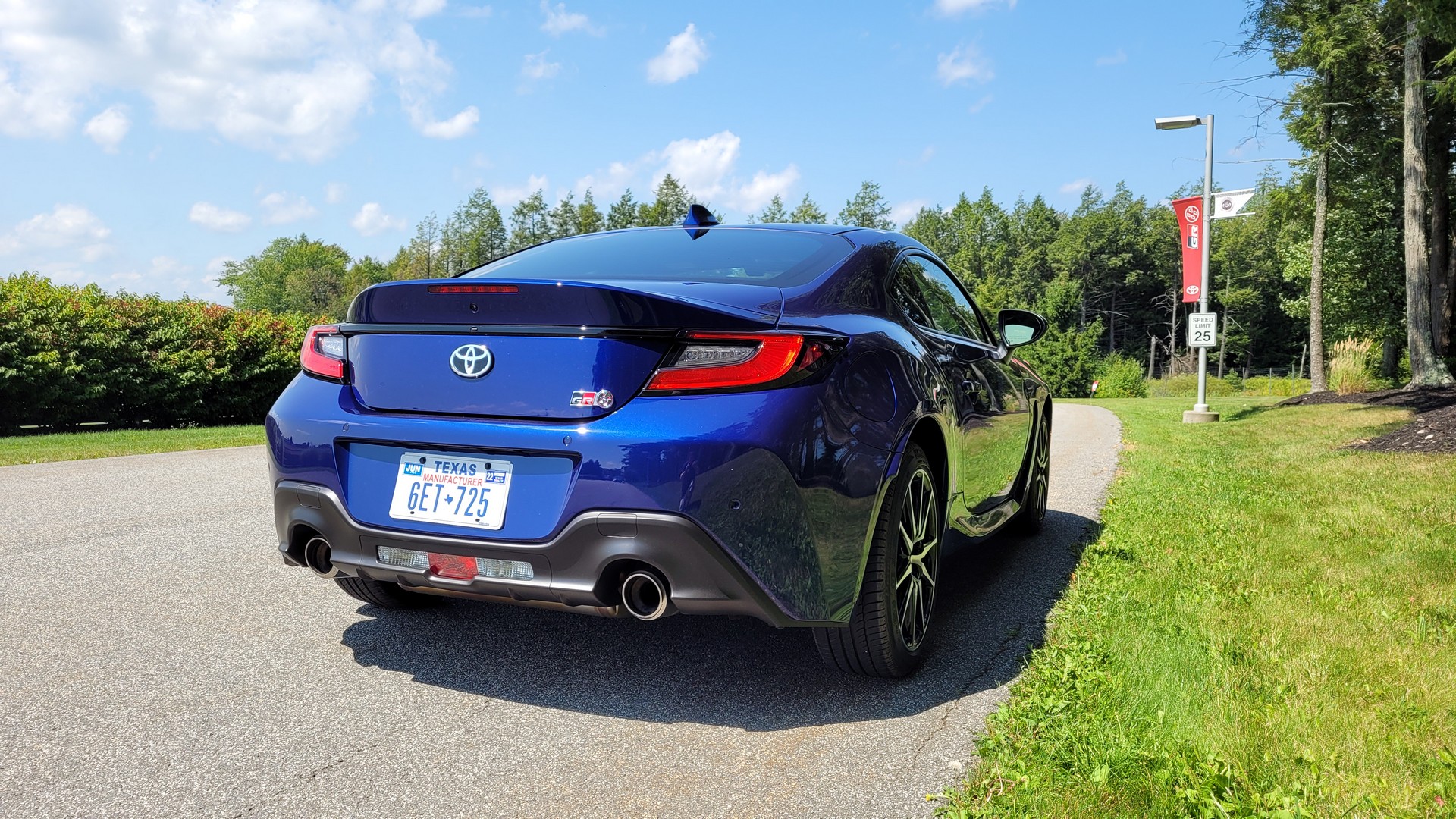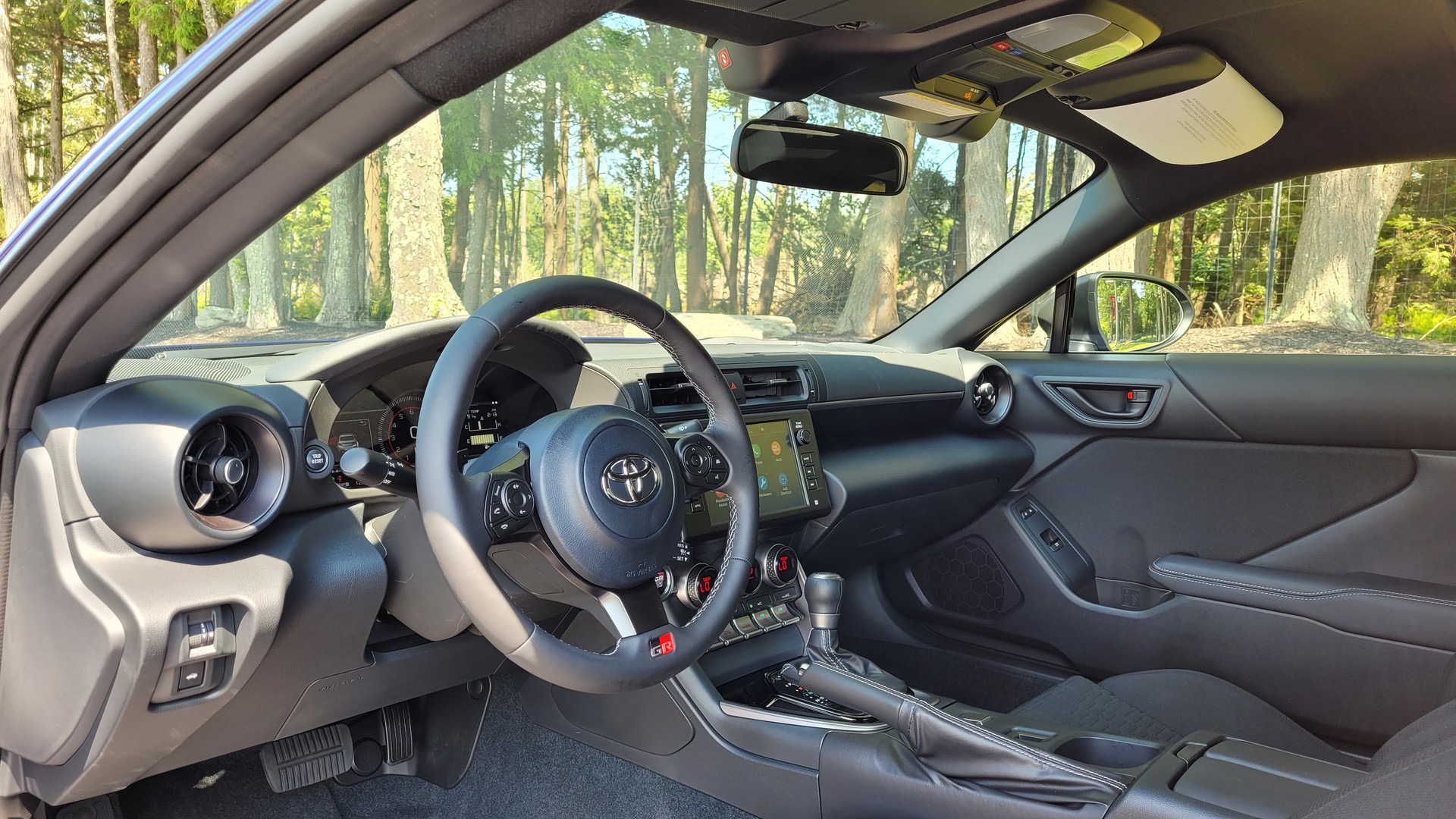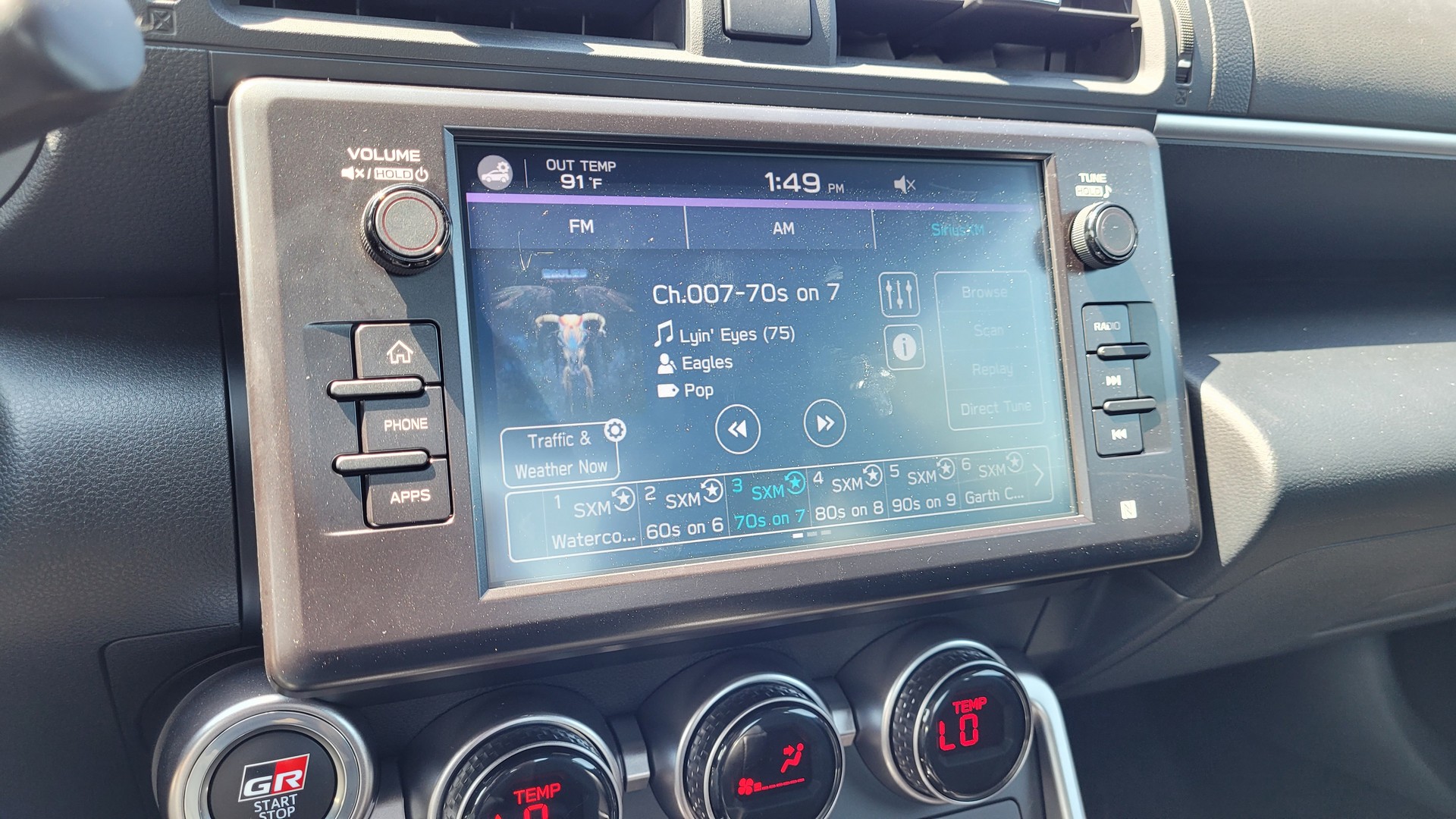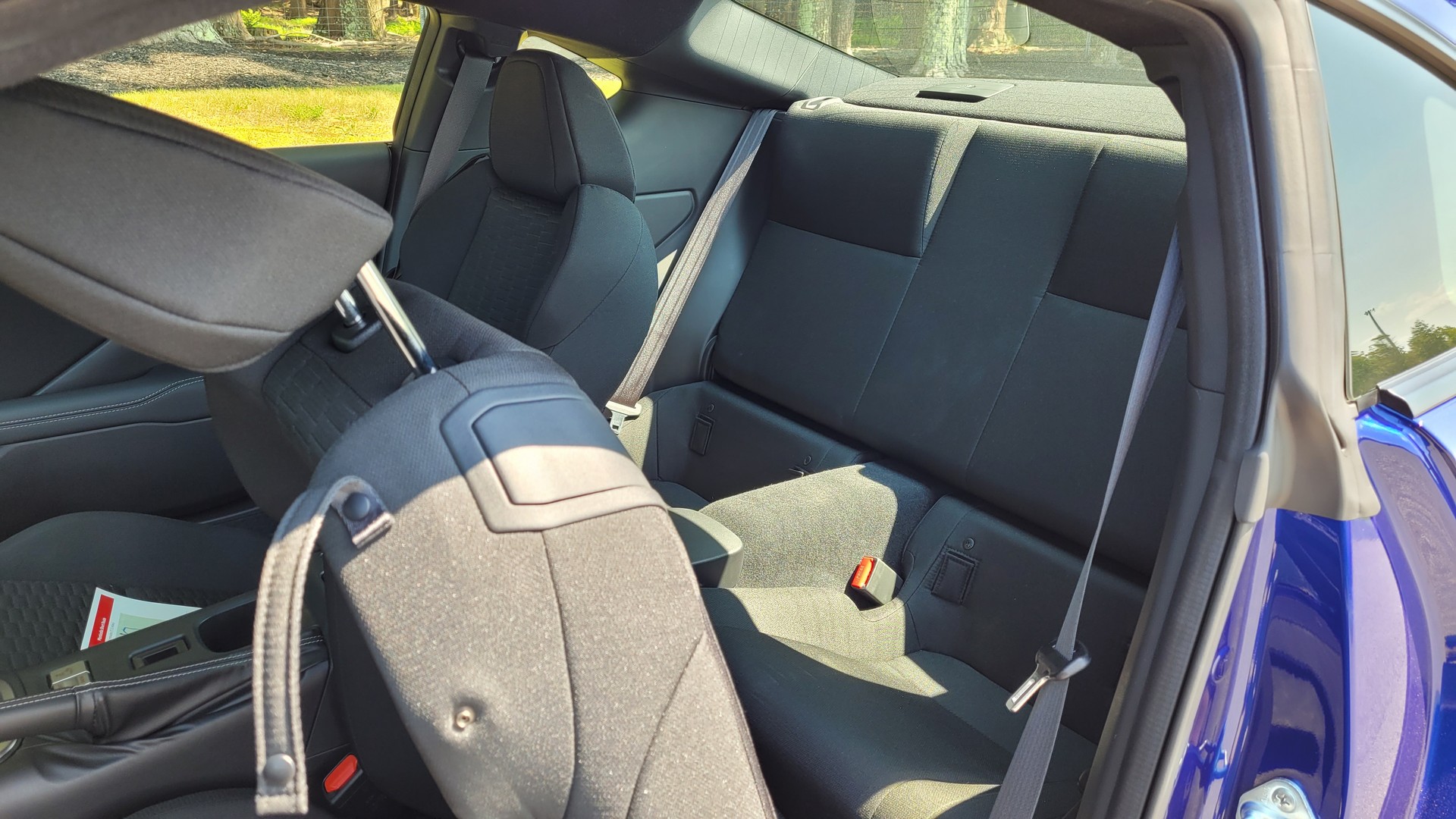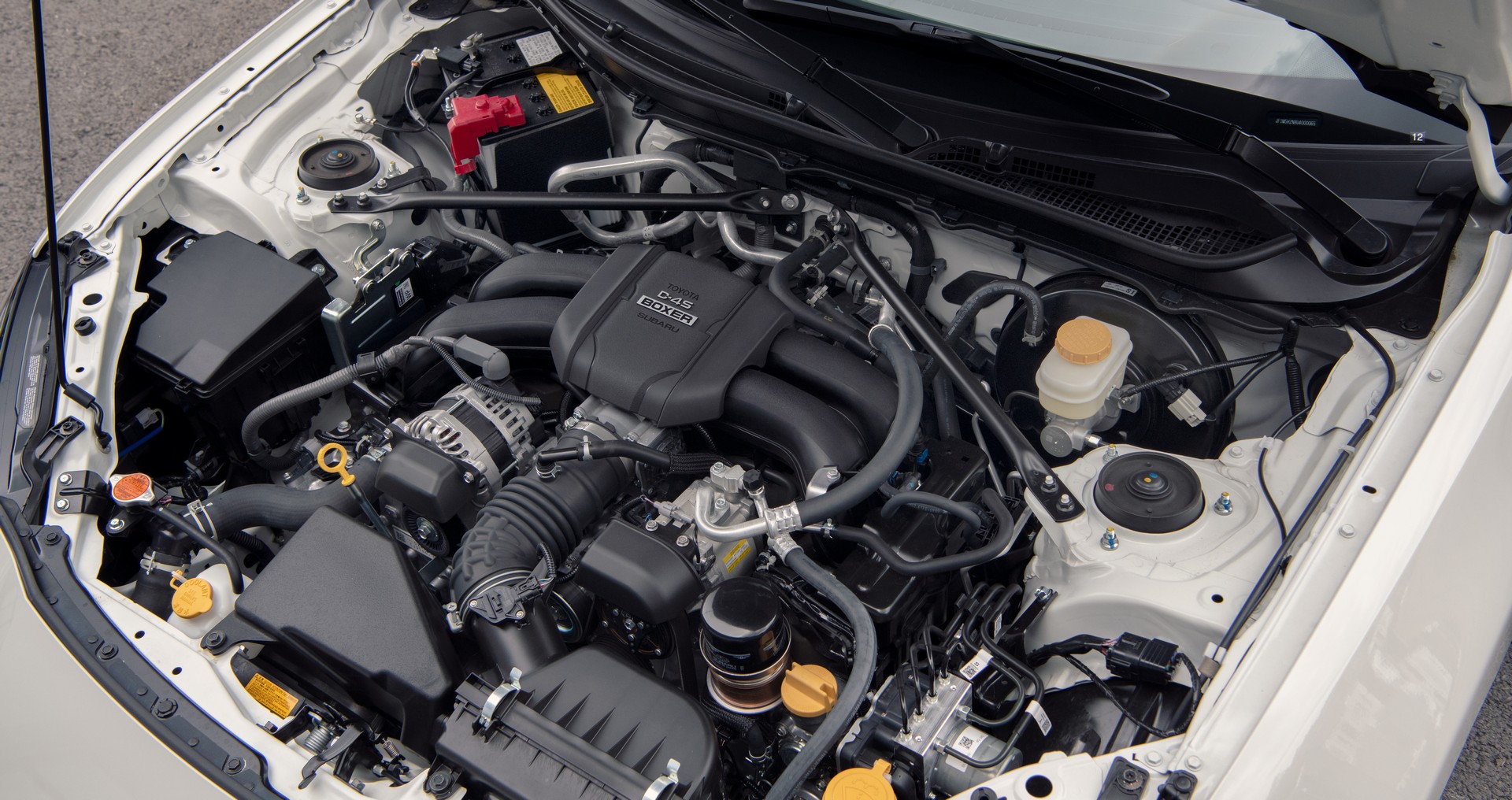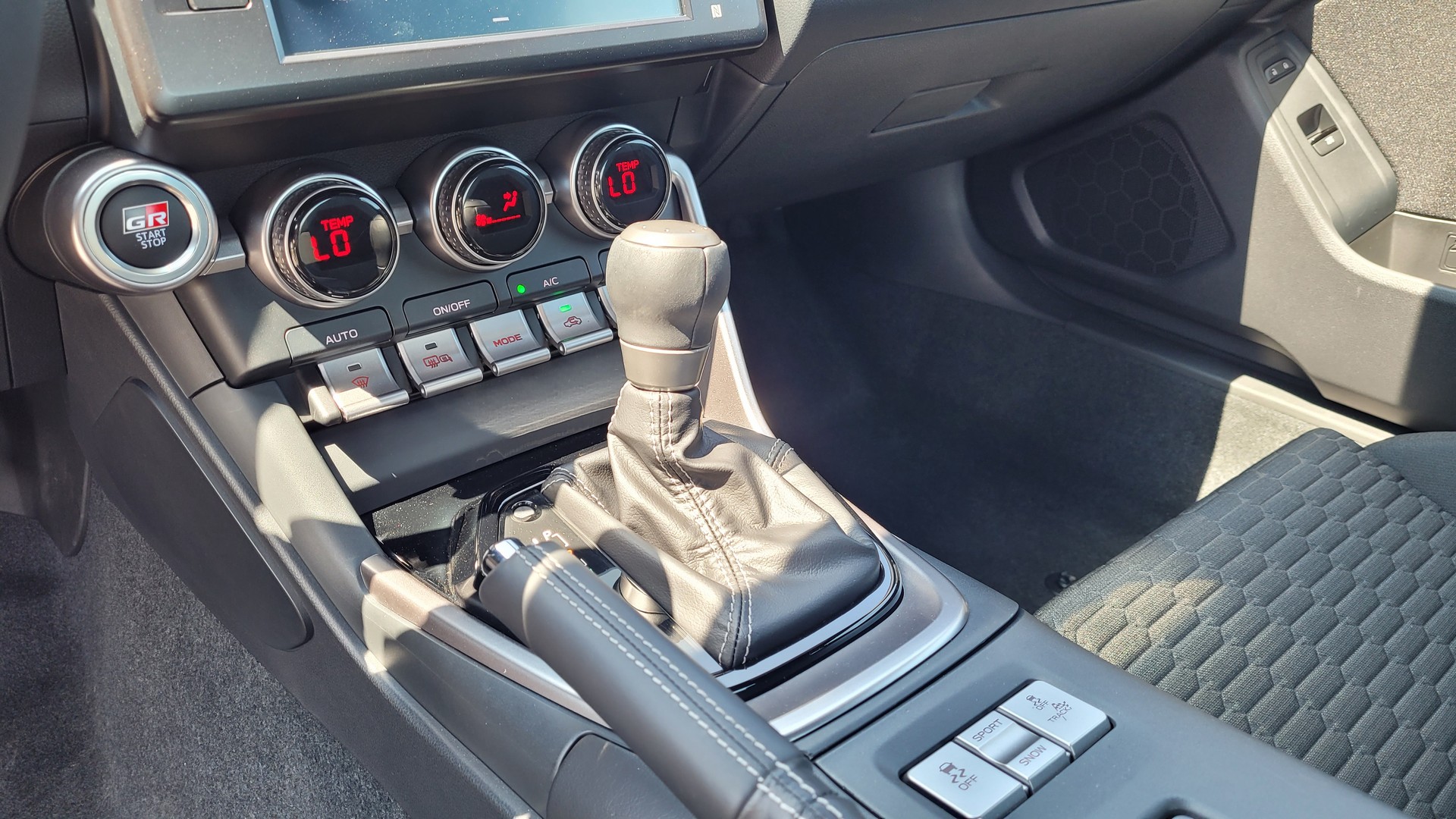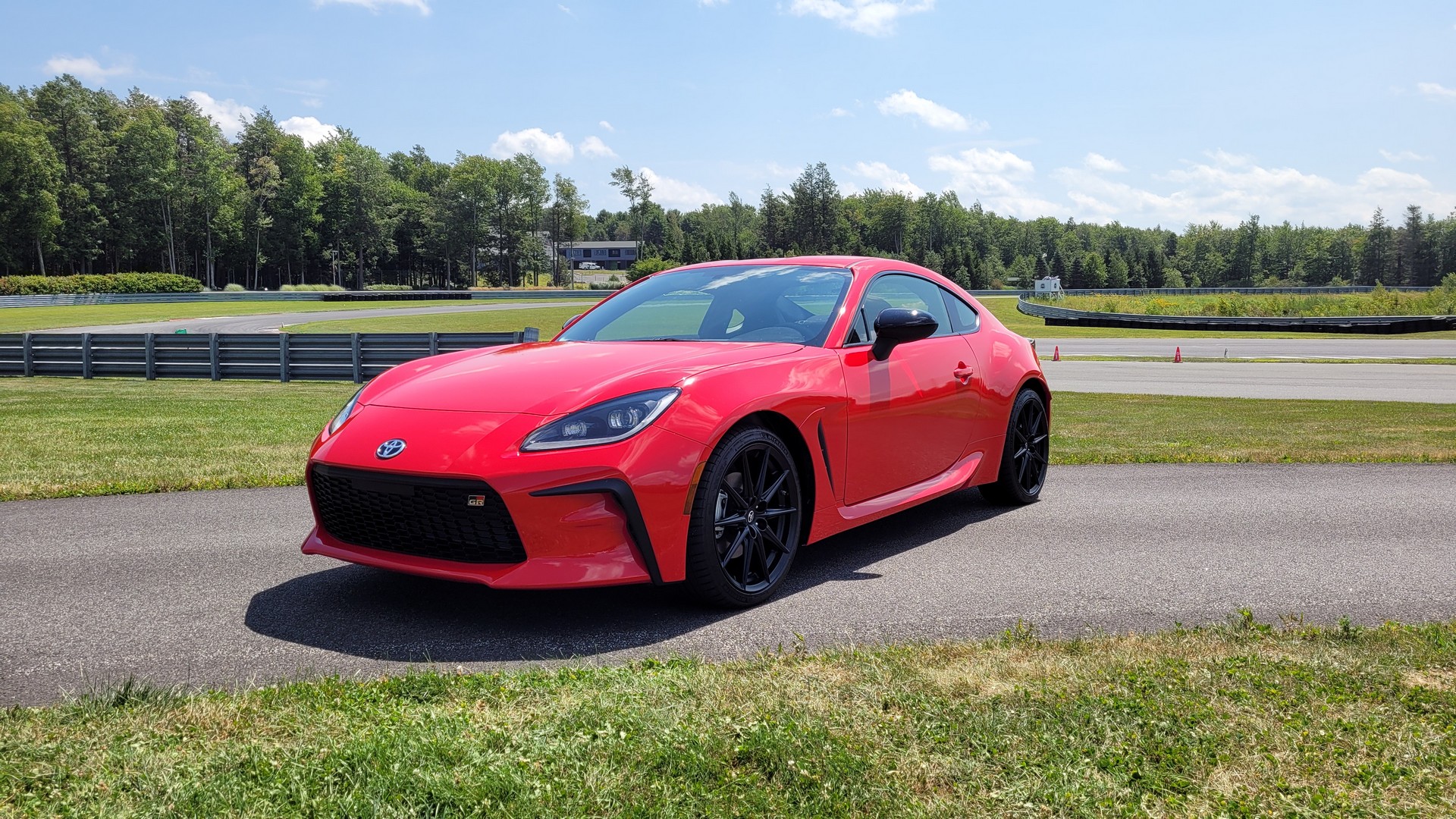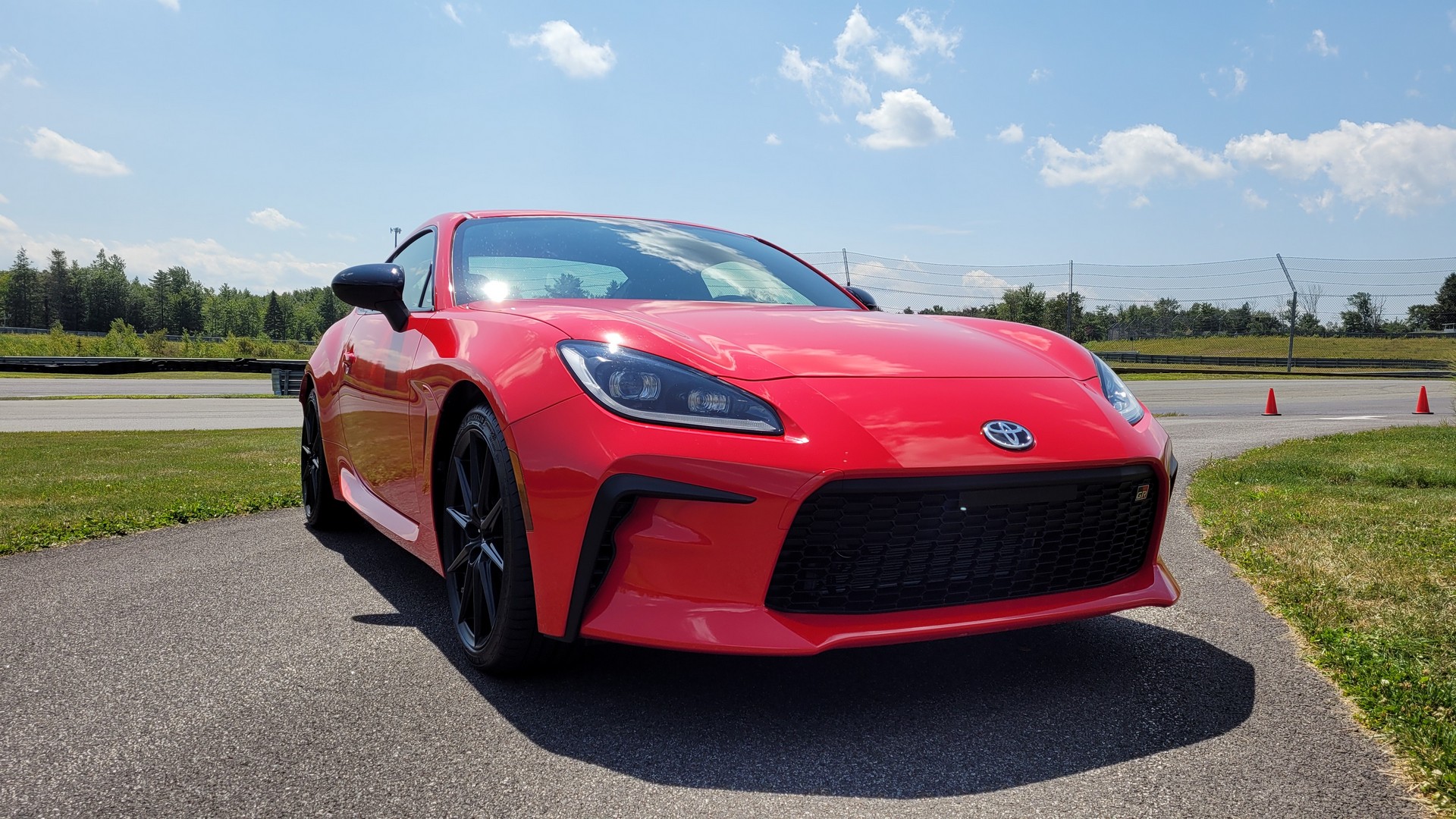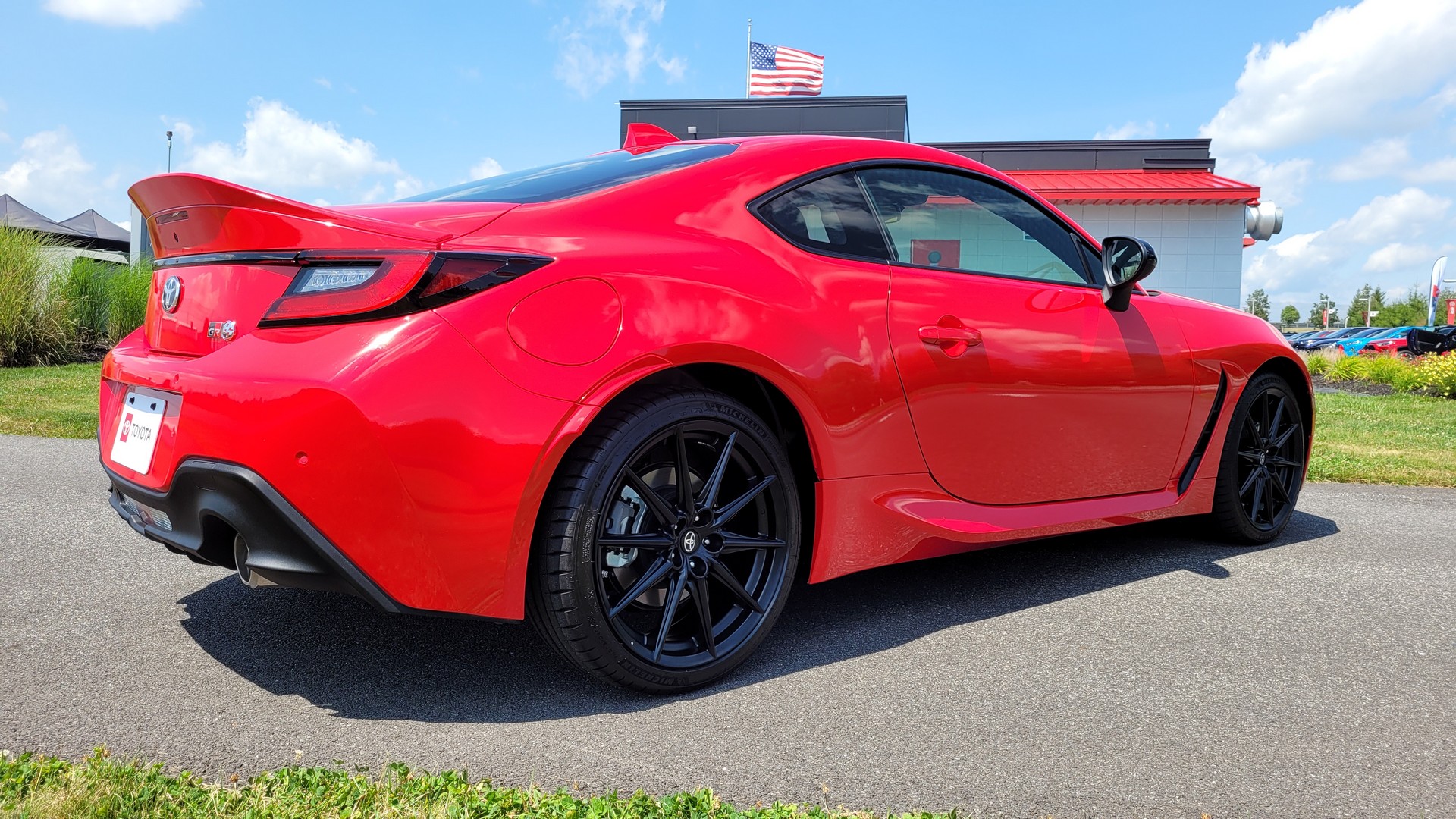Toyota has a long history of building sports cars, but they were largely eliminated in the mid-2000s.
While the Celica and MR2 are still missed by fans, a partnership with Subaru spawned an affordable rear-wheel drive coupe nearly a decade ago. It’s been known by many names over the years, but the original 86 quickly gained a reputation as one of the best drivers’ cars on the market.
That is set to continue with the all-new GR 86, which builds on the legacy of its predecessor while also addressing a number of criticisms leveled against it.
A More Distinctive Design
Few faulted the original 86’s design, but it looked virtually identical to the Subaru BRZ. That’s no longer the case as the GR 86 has a more distinctive appearance and a unique “G-mesh” grille, which is flanked by LED headlights and vertical air intakes.
Moving further back, there’s a curvaceous aluminum hood and larger front fender vents which help to prevent air pressure from building up in the wheel wells. They’re joined by sporty side skirts, a familiar greenhouse and 17-inch alloy wheels with a machine finish.
While the side profile is pretty evolutionary, the rear end is drop dead gorgeous. A sloping aluminum roof flows into a stylish trunk with an integrated rear spoiler. Designers also gave the model slick taillights, a sizable dual exhaust system and a discrete, but functional, diffuser.
It looks rather fetching in standard guise, but the GR 86 Premium adds a duckbill rear spoiler and larger 18-inch alloy wheels with a matte black finish that are shod in stickier Michelin Pilot Sport 4 tires instead of the usual Primacy HP rubber.
Like humans stuck at home during a global pandemic, new cars have a tendency to grow in size and weight. In the case of the GR 86, the changes are minimal as the coupe is 1 inch (25 mm) longer and 0.4 inches (10 mm) lower than before.
Thankfully, the model is still one of the lightest cars around as it tips the scales at 2,811 lbs (1,275 kg) with the manual transmission and 2,851 lbs (1,293 kg) with the automatic. These are minor increases of 35 lbs (16 kg) and 34 lbs (15 kg), respectively, for the base trim.
A New, But Familiar Cabin
When drivers slide behind the wheel, they’ll quickly notice a familiar cabin. This was one of the weakest areas on the old car, but the new model features a host of improvements.
One of the most notable is an all-new digital instrument cluster with a 7-inch display, which changes depending on the selected driving mode. There isn’t much of a difference between Normal and Sport displays, but the Track screen is far more distinctive as it shows a vertical RPM-band in the center and a large upshift indicator. It’s joined by a lap timer as well as a minimalist speedometer.
The 86 has never been a high-tech powerhouse, but the new model features an 8-inch infotainment system which is larger and more modern than previous displays. We didn’t play around with the system much, but it features volume and tuning knobs as well as physical buttons for the home screen, phone, radio and apps menu.
The infotainment system is pretty basic, but it’s easy to use and features modern graphics. It also has voice recognition technology, but it only supports Android Auto and Apple CarPlay via a wired connection. That’s a bit disappointing, but the system pumps music to six-speakers in the base model and eight in the Premium variant.
Putting the screens aside, the cabin features a new dashboard and a modernized center stack with higher quality controls for the dual-zone automatic climate control system. The layout has also been improved as the engine start/stop button moves from the base of the stack to a more natural position further up.
Sport seats come standard on the GR 86 and they feature heavy bolstering as well as leather and Alcantara upholstery on Premium variants. They’re perfectly comfortable and offer enough support to keep you in place on track days. Furthermore, there’s plenty of room up front even while wearing a helmet.
The rear seats, on the other hand, are largely just for show. That being said, they’re useful for throwing a bag in back and can be folded down to allow the GR 86 to hold a full set of four spare tires. Speaking of space, the trunk is a bit small, holding 6.3 cubic feet (178 liters) of luggage.
Rounding out the interior highlights are power windows and locks, a leather-wrapped steering wheel, and an Active Sound Control system for “enhanced engine sound within the cabin.” The Premium trim ups the ante by adding aluminum pedals, heated front seats and synthetic leather at key touchpoints.
On the safety front, the GR 86 comes standard with seven airbags and Toyota’s Star Safety System which includes vehicle stability control, traction control, hill start assist and a tire pressure monitoring system, among other things. The big news is that models equipped with an automatic transmission gain an assortment of driver assistance systems including adaptive cruise control, pre-collision braking and pre-collision throttle management as well as lane departure warning. They’re joined by high beam assist, lead vehicle start alert and sway warning.
These are notable new additions and the car also offers connected features such as remote engine start, remote climate adjustment, and remote locking / unlocking of the doors. There’s also a vehicle locator, diagnostic alerts and monthly vehicle health reports. Customers can also opt for a Safety Connect subscription that provides enhanced roadside assistance, emergency assistance, automatic collision notification and a stolen vehicle recovery service.
The New 2.4-Liter Boxer Provides A Significant Performance Boost
While the original 86 was widely praised, many customers and reviewers complained about the car’s anemic 2.0-liter four-cylinder engine that produced a maximum output of 205 hp (153 kW / 208 PS) and 156 lb-ft (212 Nm) of torque. Toyota has addressed this with an all-new 2.4-liter four-cylinder boxer engine, which features a new intake and exhaust as well as a larger displacement.
The new engine produces 228 hp (170 kW / 231 PS) and 184 lb-ft (249 Nm) of torque, which is a notable increase. While it won’t placate fans who have been screaming for a turbo, Toyota has previously told us a turbocharged engine would have increased complexity and cost, which is the exact opposite of the GR 86’s mission of being an affordable, lightweight sports car.
Besides being more powerful, the engine produces peak torque far earlier than before. It arrives at 3,700 RPM, which means it’s far more accessible this time around.
Thanks to the changes, the GR 86 is a good bit quicker as the dash to 60 mph (96 km/h) takes 6.1 seconds with the manual and 6.6 seconds with the automatic. These are improvements of 0.9 and 1.4 seconds, respectively.
Sticking with the performance theme, engineers have improved both transmissions for 2022. Starting with the six-speed manual, the DIY gearbox has been strengthened to cope with the extra power while a carbon synchronizer was added to improve shifting into 4th gear. The tranny also uses low-viscosity oil and bearings to improve operation at low temperatures. Last but not least, the shifter itself has been redesigned to provide a better diagonal shift feel from 2nd to 3rd and 5th to 4th.
Driving the first- and second-generation cars back-to-back, it’s clear the modifications have made a difference. Shifting feels smoother and more rewarding, which is exactly what enthusiasts want.
That being said, almost 70 percent of buyers opt for the automatic transmission. While it remains a six-speed unit, the gearbox has been equipped with a new torque converter and additional clutch discs. Toyota also says the tuning has been improved for “optimal gear selection based on driver input.” In particular, in Sport mode, the transmission senses brake and accelerator operation as well as vehicle behavior to select the best gear for the task at hand.
In practice, things were a bit hit or miss, especially on the track. In Sport mode, there were a couple of occasions where the transmission held onto its gear for too long and I was considering using the paddle shifters to bend it to my will. That being said, these were rare occurrences and the transmission worked well in normal mode on the street.
Due to the extra power and weight, the 2022 GR 86 is slightly less fuel efficient than its predecessor. Toyota estimates manual models will return 19 mpg city / 26 mpg highway / 21 mpg combined, while the automatic variant should get 20 mpg city / 30 mpg highway / 24 mpg combined. Assuming those numbers pan out, that’s a decline of 2-3 mpg for the manual, while it’s worth noting the model once again requires premium fuel.
Designed To Be Driven
While the GR 86 is reasonably quick, it isn’t about raw power or speed. Instead, it’s all about handling and the driving experience.
This is where the original 86 excelled and the GR 86 continues that legacy. The car is a delight on the track as it features light and responsive steering as well as powerful ventilated discs that measure 11.6 inches (295 mm) front and 11.4 inches (290 mm) rear.
More importantly, the car’s remarkable handling remains intact and has possibly been improved thanks to a number of suspension changes. While the GR 86 continues to use MacPherson struts up front, engineers optimized the spring and damping rates as well as added rebound springs to the shock absorbers. The multilink rear suspension also benefits from spring and damping revisions as well as an optimized lower strut connection.
That’s just part of the story as the car’s structure has been strengthened thanks to diagonal cross members up front and a full-ring structure in the rear that “completely ties the upper and lower chassis together.” On top of these changes, the coupe features additional structural adhesive and more high strength steel.
Engineers didn’t stop there as the GR 86 benefits from a lower center of gravity, a beefier steering box mount and an upgraded cooling system. While the car retains its 53:47 weight distribution, there are plenty of lightweight aluminum components including the front fenders, roof and hood. They’re joined by a resin fuel door, lightweight front seat frames, and an electric power steering system that is smaller and lighter.
While that’s just an overview of what’s happening beneath the skin, the real story is that the GR 86 drives beautifully. It has a playful character and drivers can easily push it to its limit without going over thanks to a limited-slip differential and an assortment of electronic nannies. That being said, you can still kick the tail out and have a hell of a lot of fun doing it.
While the GR 86 is great on the track, it will undoubtedly spend most of its time on the street. This isn’t a problem as the coupe is a dual purpose sports car, which is track capable as well as comfortable enough for daily driving.
Find a twisty back road, like those around New York’s Monticello Motor Club, and you’re in for a great drive as the car hugs corners and zips from place to place. It’s a hugely rewarding experience and its dynamics separate the GR 86 from similarly priced muscle cars.
An Evolutionary, But Welcome Redesign
The 2022 Toyota GR 86 takes everything people loved about the original and improves on it. Besides a stylish new design, there’s an upgraded interior with modern technology and driver assistance systems.
More importantly, Toyota addressed one of the biggest complaints – a lack of power. While the new 2.4-liter engine won’t please everyone, it’s a significant upgrade and improves performance while also making the car more enjoyable.
Despite these and other changes, there aren’t any major tradeoffs as the weight gain is minimal and fuel economy only takes a slight hit. Toyota was also able to hold the line on pricing as the 2022 GR 86 is slated to start under $30,000 when it goes on sale in November.
While some people will undoubtedly whine about the lack of a turbocharged engine, they’re missing the point. The 86 has always been about delivering amazing handling and great driving dynamics. The GR 86 continues that tradition and enthusiasts can rejoice.




